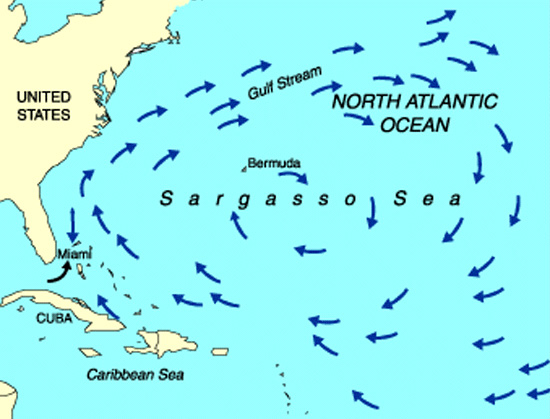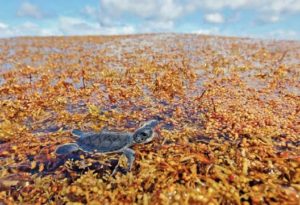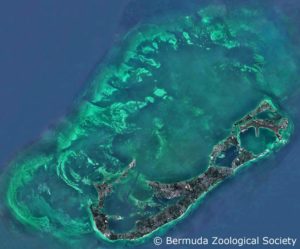Bermuda consists of a group of over 120 rocky islands covered by sandy soils. The exposed parts of the islands consist mostly of limestone. In this respect they are totally different from the original hard-rock volcanic islands that first formed Bermuda. This change is a result of the activities of marine organisms that colonized the original volcanic rock. This group of oceanic islands has always been far from any continental landmass. It arose about 110 million years ago due to volcanic activity along the Atlantic mid-oceanic ridge. Because Bermuda rides on the North American plate, it has been moved by plate tectonics 1,800 kilometers (1,118 miles) to the west, to lie in the western Atlantic Ocean.

Bermuda’s geographic location is 960 kilometers (600 miles) east of Cape Hatteras, North Carolina. It is the northernmost coral reef system in the world and owes its subtropical climate to its position in the Sargasso Sea, east of the warm Gulf Stream Current.
All ocean basins have massive surface currents moving in a more or less constant clockwise pattern. The current of greatest importance to Bermuda is the Gulf Stream which originates at the southern tip of Florida. It is formed by waters flowing from the tropical Atlantic just north of the equator. The tropical climate heats the water and the N.E. trade winds push the water to the west through the Caribbean, north along Central America, and around the Gulf of Mexico. The current is intensified by passage through the narrow Straits of Florida, between the USA and Cuba, where it becomes the Gulf Stream. This fast, warm current passes just to the west of Bermuda, and eddies from the Gulf Stream frequently surround the island. The climate of Bermuda is therefore much warmer than it would be, were it in the eastern Atlantic.

The warm Gulf Stream Current is not only responsible for the warm climate — it also carries marine organisms and floating terrestrial material to the shores of Bermuda. This explains the origins of most of the flora and fauna of the island.
Bermuda lies in the northwestern part of the Sargasso Sea. Driven by the Gulf Stream from the northwest and the Canaries Counter Current from the southeast, the Sargasso Sea turns lazily clockwise, trapping anything that drifts into its path including the brown algae Sargassum, driftwood and marine debris.
The once forbidding, still mysterious Sargasso Sea offers a unique refuge for animals in the open ocean. These include the sargassum pipefish, the sargassum sea slug, and the sargassum crab, allx of which mimic the mottled seaweed. Dolphinfish and jacks come here to breed; eels make the long journey from North American and European rivers for the same purpose. Flying fishes lay their eggs in long strings anchored to the Sargassum. Feeding on the Sargassum and on the invertebrates, fish eggs, and smaller fishes, are larger animals such as porcupine fishes, sargassum fish and recently-hatched sea turtles.

The Bermuda Platform is an atoll. The islands and reefs surround a shallow central lagoon. Total habitable land area is only 55 square kilometers (21 sq miles) of the 1,000 square kilometers (386 sq miles) that make up the entire platform. Our geographically isolated location, limited size, and the fact that sea turtles are completely protected make Bermuda an ideal site for study of the “developmental habitat” phase of sea turtle life history.